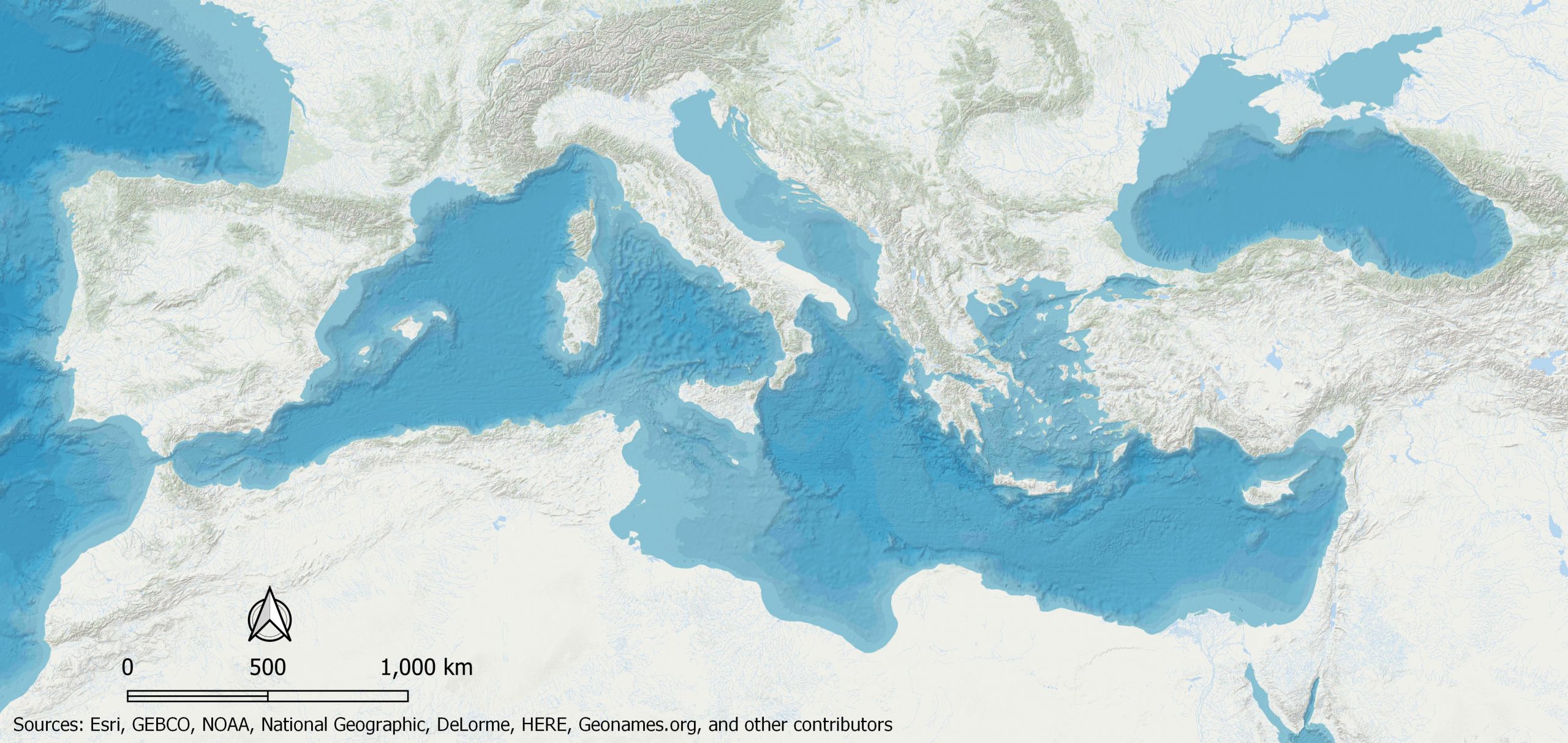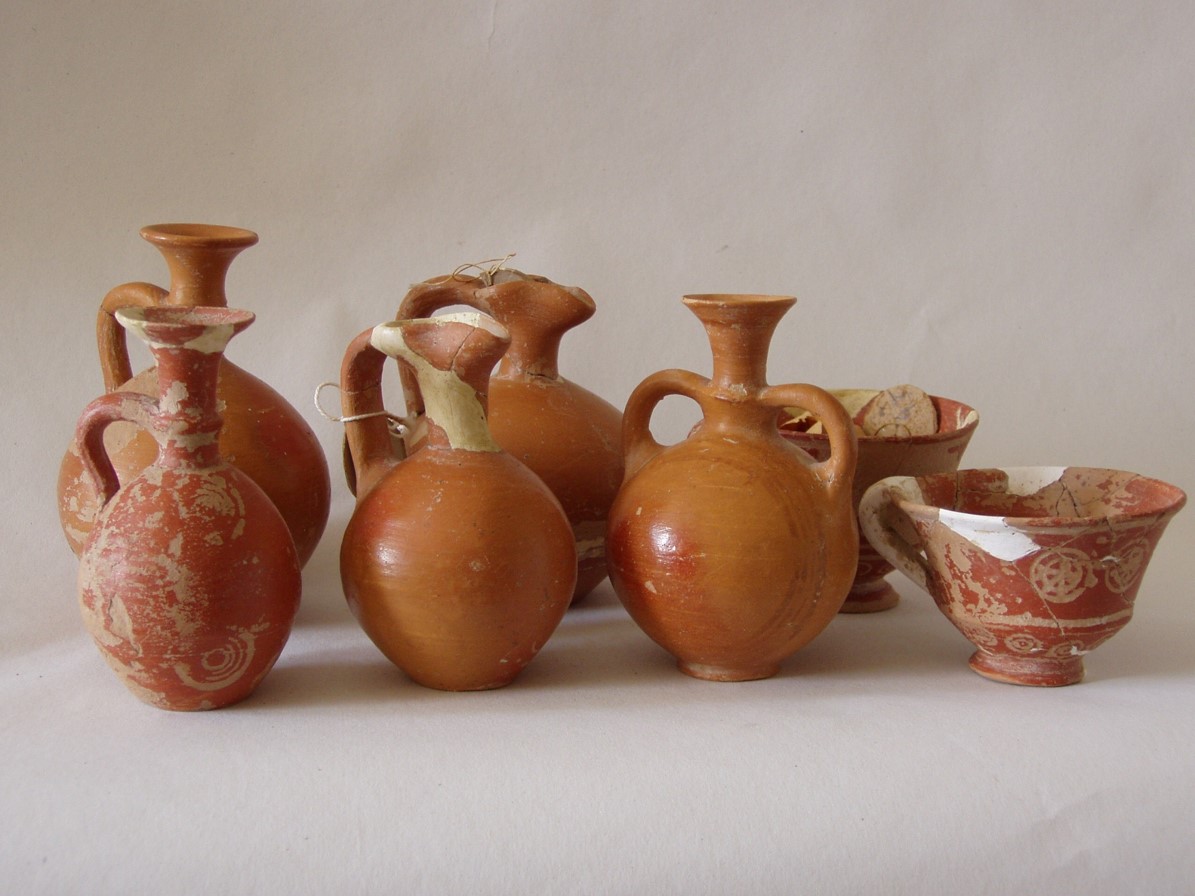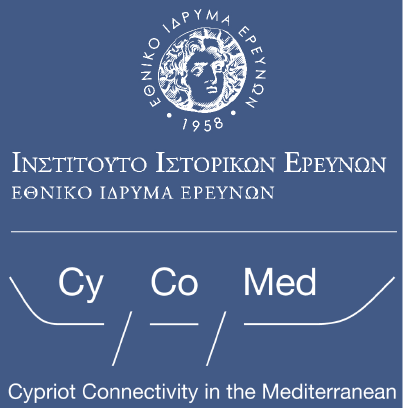Cypriot Connectivity in the Mediterranean from the Late Bronze Age to the End of the Classical Period (acronym: CyCoMed)
National Hellenic Research Foundation/Institute of Historical Research/Section of Greek and Roman Antiquity in collaboration with the University of Cambridge/Faculty of Classics
We need look no further than a map of the Mediterranean to understand the geographic importance of Cyprus. Few other places enjoy such a strategic position and few other areas in the Mediterranean have been so successful in building and retaining close cultural contacts with neighbouring areas. A large island by Mediterranean standards (third in terms of surface area after Sicily and Sardinia), Cyprus dominates the centre of the eastern Mediterranean basin. With the landmass of Asia Minor to the north, the Syro-Palestinian littoral close by to the east, affluent Egypt to the south and the fragmented Aegean further away to the west, the archaeology of Cyprus is an amalgamation of multiple mutual interactions with the whole of the eastern Mediterranean and beyond. Although past scholarship often treated ancient Cyprus as an area of successive foreign dominations and influences—an approach that clearly underrates the island’s cultural dynamism and vitality—we are now fully aware that Cyprus was the setting for and instigator of major political, cultural and economic accomplishments throughout antiquity.
The island is rich in natural resources. The Mesaoria and Morphou plains are suitable for cultivation, the dense woodland in the Troodos mountains provided timber for shipbuilding and, most importantly, the foothills of the Troodos are very rich in copper, the latter being a commodity that was highly valued and in great demand throughout the Mediterranean. No one has epitomized more eloquently the rich resources of ancient Cyprus than Strabo (14.6.4–5):
“In fertility Cyprus is not inferior to any one of the islands, for it produces both good wine and good oil, and also a sufficient supply of grain for its own use. And at Tamassos there are abundant mines of copper, in which is found chalcanthite and also the rust of copper, which latter is useful for its medicinal properties.”

Even though agricultural self-sufficiency was largely dependent on an unpredictable annual rainfall, ancient Cyprus had all that was needed to thrive economically: a location at the crossroads of major intra-Mediterranean maritime routes, good arable land, plenty of timber for shipbuilding, a regular coastline to accommodate port activities and a prestigious mineral commodity, copper. Notably, Cyprus was successful in preserving its economic status even during periods of major upheaval and economic recession, as in the case of the final years of the 13th century BC that witnessed the collapse of socioeconomic structures in many parts of the eastern Mediterranean. As a result, unlike areas such as the Aegean, ancient Cyprus did not experience a ‘Dark Age’. The latter is a term used to refer to the late second/early first millennium BC Aegean, a period of reduced archaeological visibility when the use of writing was lost, although recent discoveries are reducing the gap in the existing record and the term is far less popular today even in Greece.
The island interacted with almost every major civilization that influenced the eastern Mediterranean politically and culturally (Minoans, Mycenaeans, Phoenicians, Assyrians, Persians, Egyptians, Athenians). Easy and direct access to major maritime routes, along which people, products and ideas circulated, became a pivotal element that helped to shape Cyprus’ cultural identity. The seafaring reputation of the Cypriots transcends most eras of the island’s history and facilitated maritime connections. Their enhanced mobility resulted in enhanced connectivity through which Cyprus became both the source and recipient of influences, and its people adept in cross-cultural interaction and adaptation. Cyprus managed to retain and exploit its uniquely favourable environment for human mobility, the exchange of ideas and the spread of technologies and thus offers exceptional conditions for the archaeological investigation of such phenomena. For all these reasons, Cyprus is one of few cases in which Mediterranean connectivity is comprehensively documented over long periods of time. Moreover, the island has been extensively excavated and published, resulting in a rich academic literature and, therefore, provides solid ground for further research.

In spite of its importance, Cyprus’ position in ancient Mediterranean networks and the possibility of an active Cypriot role and presence overseas have not been adequately addressed by modern scholarship.
The contribution of Cyprus has been underrated, largely due to 1) the common perception (until fairly recently) of Cyprus as a passive recipient of external influences, 2) the incomplete or erroneous assessment of Cypriot material evidence overseas, and, for the Early Iron Age, 3) Phoenician mercantile supremacy that has overshadowed the activity of other agents. These factors have resulted in a paradoxical treatment of Cypriot evidence found outside Cyprus, and its frequent dissociation from mercantile activity and the possible presence of Cypriots overseas. A revision of our current understanding of the role of ancient Cyprus in the wider Mediterranean context, based on fresh evidence and new methodological approaches, is fundamental for the study of the ancient Mediterranean as a whole. Cyprus had close connections with almost all the important areas situated along or close to the Mediterranean littoral, such as the Syro-Palestinian coast, Asia Minor, Egypt, the Aegean and Italy – all places where remains of Cypriot material culture and even inscriptions in the distinctive Cypriot writing system have been found. Moreover, the island’s successful response to major socio-economic crises and the fact that the Cypriots developed a strong socio-cultural dynamism and flexibility provides a very interesting case study that can still be useful in politically, socially and economically complex eras like our own.
This brings us to the second part of this short introduction to the CyCoMed research project. Why is there more scope for the study of ancient Cyprus?
The past decades have witnessed remarkable progress in ancient Cypriot studies, creating a sound basis for further research on the island’s ancient history and culture. Despite this progress, however, the dispersal of Cypriot goods and objects at sites outside the island has not received the attention it deserves.
For this reason, the CyCoMed project aims to assess archaeological data from carefully selected sites in the Mediterranean, in relation to epigraphic, literary and, when applicable, numismatic evidence, making use of modern digital approaches.
Such a collective and interdisciplinary treatment, based on the comparative study of archaeological, epigraphic and, for later periods, numismatic evidence, is needed to achieve a more complete picture of Cyprus’ position in the cultural and socio-economic setting of the ancient Mediterranean. In order to secure the quality of research, the project team involves experts in a wide range of ancient Cypriot studies, including archaeology, numismatics, linguistics, epigraphy and data management.
The chronological span of the project is set between the second half of the 17th century BC, which marks the beginning of the Late Bronze Age in Cyprus, and the late 4th century BC, when the Cypriot city-kingdoms were dissolved (c. 1650–310 BC in absolute terms). During this period Cyprus experienced not only high levels of contact with the rest of the Mediterranean, but also significant changes in its socio-economic structures and patterns of interaction with other areas, all of which had an impact on the material culture and written record of the island. Such a ‘macro-historic’ approach (taking in more than 1000 years of cultural contact) is important for studying long-term trends because it mitigates academically imposed distinctions between different periods (for example between the final Late Bronze and the Early Iron Age), while still allowing us to focus, when necessary, on a limited portion of Cypriot history and thus deal with more manageable sets of data. An additional advantage of the time frame is the large amount of evidence and, in the case of the written record, a deciphered script, the Cypriot Syllabary.
The aim of the CyCoMed project is to address some key questions to help us understand the role of Cyprus and Cypriots in wider Mediterranean culture. These include:
1) How is Cypriot activity and, perhaps, a Cypriot presence in the ancient Mediterranean reflected by and in the material and epigraphic evidence? What is their provenance and contextual setting?
2)How do different types of Cypriot evidence relate to each other?
3) What similarities or differences can be found in Cypriot evidence from different parts of the Mediterranean? How did Cypriot connections with each area differ?
4) Does evidence of Cypriot writing mirror the distribution of other objects? What is their source and context?
5)What changes can be deduced from the study of Cypriot material and epigraphic evidence in the Mediterranean over a long period of time? How did patterns of interaction change and what role did the Cypriot play in these changing patterns?
6) What, potentially, was the role of Cypriot material and epigraphic evidence discovered abroad as a statement of a Cypriot cultural and/or political identity?
7) How does Cypriot material and epigraphic evidence found outside Cyprus change over time? How does it mirror the historical setting both on Cyprus and in the areas where this evidence is found?
The CyCoMed project is funded by the Hellenic Foundation for Research and Innovation (HFRI) and the General Secretariat for Research and Innovation (GSRI) as part of the first HFRI advertisement for postdoctoral research projects, under grant agreement no. 481. The project has a three-year duration (October 2018–October 2021). It is hosted by the National Hellenic Research Foundation (NHRF), Institute of Historical Research (IHR), Section of Greek and Roman Antiquity (SGRA). The host institution is represented by Dr Evangeline Markou, senior researcher and member of the scientific team of the CyCoMed project. The University of Cambridge – Faculty of Classics acts as secondment institution for the CyCoMed principal investigator, Dr Giorgos Bourogiannis. The University of Cambridge is represented by Dr Philippa Mary Steele, senior researcher and member of the scientific team of the CyCoMed project.
